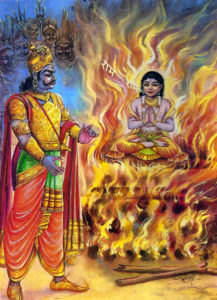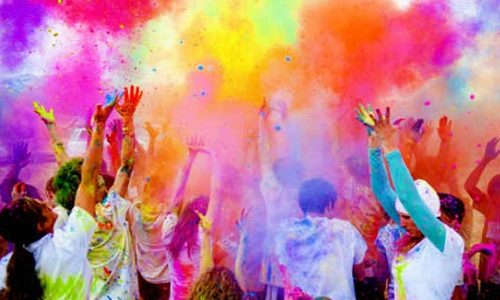 Hindu festivals, often steeped in historical and mythological background, are rich in significance and continue to provide benefits in every sphere of life. These observances are so all-embracing that everything, from the ants to the atmosphere, gains from them. The festival of Holi or Phagwa, celebrated in the Hindu month of Phalgun (February-March), continues to attract growing numbers of celebrants throughout the world, holding great significance from the religious, cultural, medical and environmental standpoints.
Hindu festivals, often steeped in historical and mythological background, are rich in significance and continue to provide benefits in every sphere of life. These observances are so all-embracing that everything, from the ants to the atmosphere, gains from them. The festival of Holi or Phagwa, celebrated in the Hindu month of Phalgun (February-March), continues to attract growing numbers of celebrants throughout the world, holding great significance from the religious, cultural, medical and environmental standpoints.
The Legend of Prahalad
Foremost among the legends associated with Phagwa, is the narrative of Prahalad and Hiranyakashipu. According to the legend, there once lived an evil and powerful king, Hiranyakashipu, who held god-like sway over the world. He wanted everybody to worship him. To his great ire, his son, Prahalad who was indoctrinated in the worship of Lord Vishnu even before birth, began to worship this aspect of Divinity. To get rid of his son, Hiranyakashipu made several attempts to kill him but each one was unsuccessful. Finally, he asked his sister, Holika to enter a blazing fire with Prahalad in her lap, as she possessed a boon to enter fire unscathed. Prahalad was saved due to his devotion to the Lord while Holika paid a price for her sinister desire. The tradition of burning Holika or the ‘Holika dahan’ comes mainly from this legend.
Religious Significance
The celebration of this festival of Holi, the re-enactment of the legend and the atmosphere of merriment heralded by this observance all serve to reassure devotees of the power of truth, the victory of light over darkness and good over evil. The compassion and love of the Lord for His devotee inspire renewed faith and confidence in the worshipper.
Social Impact
Social interaction, co-operation and active intermingling flow naturally in the group-singing of the chowtaal, ulaara and other folk songs, and the spraying of abeer and powder. The camaraderie that the celebration evokes, fosters a heightened sense of community that builds the social man. Benevolence and peace for one’s fellow man encourage the strengthening of harmony, gratefulness for each other, acceptance and willing adjustments.
Environmental benefits
The festival of Holi is connected to the agricultural season in India since it marks the harvesting of the crops, evoking in the minds of the villagers a sense of completion, accomplishment and success. Indeed, a reason to celebrate.
Apart from this, the beginning of the new season induces the growth of bacteria in the atmosphere. The heat generated by the burning of the effigy of Holika kills many of the bacteria and purifies the air.
Medicinal benefits
According to the Vedas, the colours of the spectrum (red, orange, yellow, green, blue, indigo and violet) help cure diseases. The essence of cosmic colour therapy is based on the understanding that in the human body, different organs are associated with different colours and any deficiency of colour causes ill-health. In light of this, the use of the various colours of powder during the celebration of Holi can be beneficial.
In addition, traditionally, the powders were made from neem, bale and hardi and other medicinal herbs prescribed by Ayurvedic doctors. These plants are well-known for their medicinal uses and the powders have been an integral part of the celebration, despite variations added over time.
Indeed, the celebration of this joyous festival goes far beyond the allegory and holds many benefits to all.



